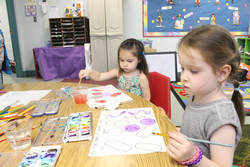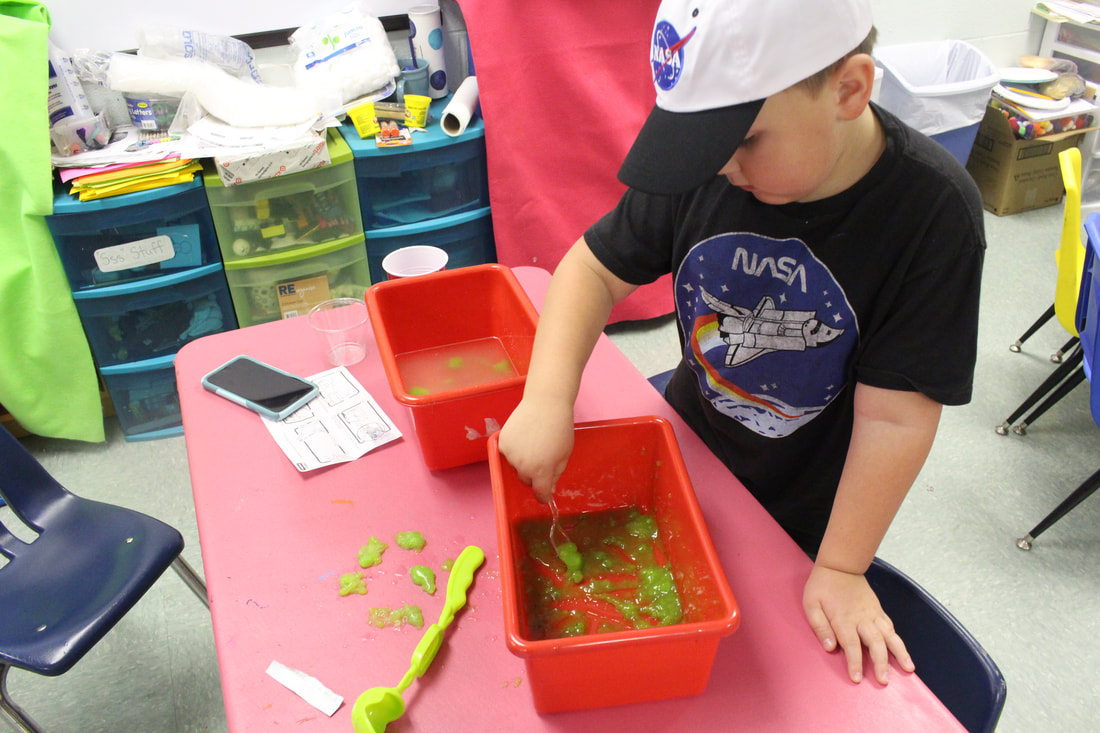

|
Science education for young learners should always have a goal and an overall direction, rather than the students just completing a series of random experiments. In our STEM: Germs class, we learned that three basic shapes of bacteria are rods (bacilli), spirals (spirilla), and spheres (cocci).  Children need opportunities to participate in many different activities that teach the same concept. Here, they are sorting rods, spirals and spheres. We made necklaces with rod-shaped "bacteria". Sensory play is especially important for young children because it encourages them to investigate and explore using scientific processes on their own. Here they are pretending these water beads are sphere-shaped "bacteria". Incorporating art helps build fine motor skills while reinforcing the three main shapes of bacteria that we are learning about. We learned that there are many types of good bacteria, such as the kind in yogurt that helps us digest our food. Some kinds of bad bacteria can make us sick if they get into our bodies. Our skin usually protects us, but sometimes when we get a cut, we need a bandaid to help keep the bacteria out. When bad germs do get inside of us, different parts of our body work to protect us and keep us from getting sick. These kids are making "white blood cells" out of play dough. The white blood cells attack each germ (the play dough covers them). This was a fun activity that the kids kept asking to repeat. We learned about how germs spread by using a lotion that was activated by black light. Whatever we touched (including each other) would glow! We also used messy paint to demonstrate how germs can spread. We demonstrated how germs can spread by filling balloons with paint (germs) and pretending to sneeze (POP!)! We learned that germs are EVERYWHERE, but we made boogers because they seem especially germy.  We made more germs with black lights and neon paints. We learned that viruses are different than bacteria, but can also make us sick. The kids made 3D viruses and sorted pictures of bacteria and viruses. We learned that viruses reproduce by making copies of themselves, just like tessellations repeat their pattern. We used pepper and dish soap to demonstrate how important it is to wash our hands. (The dish soap repels the pepper.) We practiced washing our hands the correct way and sequencing handwashing pictures so we could remember. And, of course we made cupcakes and decorated them like germs!
0 Comments
Leave a Reply. |
AuthorWendy Joy Yohman Archives
December 2017
Categories
All
Sites I recommend:Affiliate Disclosure:
|